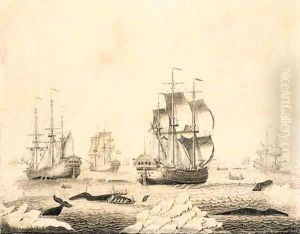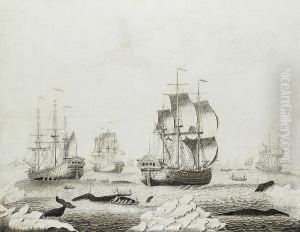Regnier Van Salm Paintings
Regnier van Salm, also known as Reinier van Salm or similar variations depending on the source, was a Dutch painter and draughtsman active during the late 17th century. While specific dates of his birth and death are not precisely documented, it is generally believed that he was born around 1650 and died around 1700. His work primarily belongs to the Dutch Golden Age, a period in Dutch history spanning the 17th century, renowned for its remarkable achievements in trade, science, military, and art.
Regnier van Salm's oeuvre mainly consists of landscape paintings, which were a popular genre in Dutch art of the time. He was known for his detailed and picturesque representations of nature, often infused with a serene and harmonious quality. His landscapes occasionally feature figures and are characterized by their attention to atmospheric effects and the use of light, elements that reflect the general tendencies of Dutch landscape painting of his era.
Despite his talents, van Salm remains a relatively obscure figure in art history. His works were often overshadowed by those of his contemporaries, such as Jacob van Ruisdael, Meindert Hobbema, and Aelbert Cuyp, who are considered to be among the greatest landscape painters of the Dutch Golden Age. However, van Salm's paintings are appreciated by art historians and collectors who recognize the quality and significance of his contributions to the Dutch landscape genre.
Little is known about van Salm's life beyond his artistic career. The scarcity of biographical details makes it difficult to fully assess his influence and standing among his peers. Nevertheless, his surviving works continue to be valued for their aesthetic qualities and as examples of the rich artistic tradition of the period. They can be found in private collections and occasionally in museums with collections focusing on Dutch Golden Age art.

